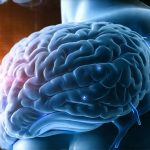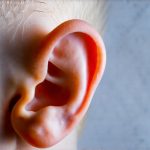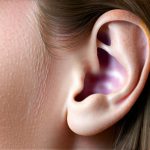Motion sickness is a remarkably common experience, affecting people across ages and backgrounds. It’s not simply a matter of being “weak” or having a sensitive stomach; it’s a complex physiological response triggered by conflicting sensory information. When your body receives mismatched signals from your inner ear (which senses motion), eyes (which may see stillness), and proprioceptors (sensors in muscles and joints that tell you where your body is in space), the brain struggles to reconcile these discrepancies, leading to that familiar wave of nausea, dizziness, and discomfort. This isn’t a failure of any system, but rather a protective mechanism gone awry – a sort of sensory overload alarm bell ringing within the nervous system.
The experience can range from mild queasiness to debilitating vomiting, significantly impacting travel, leisure activities, or even daily commutes. Understanding why motion sickness happens and what exacerbates it is crucial for managing its symptoms and minimizing its impact on your life. It’s important to remember that while unpleasant, motion sickness isn’t usually dangerous, but the distress it causes can be substantial. This article delves into the mechanisms behind motion sickness-induced nausea and explores how dietary choices and behavioral habits can either worsen or mitigate this common ailment, offering practical insights for those who struggle with it.
The Sensory Conflict at the Heart of Motion Sickness
The core issue in motion sickness isn’t necessarily the movement itself, but rather the discrepancy between what your senses are telling your brain. Consider a car journey: your inner ear detects acceleration, deceleration and turns – signaling to the brain that you are moving. However, if you’re reading a book or looking at your phone, your eyes perceive a static environment, informing the brain that you’re stationary. This mismatch is what sets off the alarm bells. The brain interprets this sensory conflict as potentially dangerous – historically, such discrepancies could indicate poisoning (a disconnect between expected sensations and reality).
This triggers a cascade of physiological responses designed to protect the body. The autonomic nervous system kicks into gear, leading to increased salivation, sweating, altered heart rate, and ultimately, nausea and vomiting. It’s essentially your body trying to rid itself of what it perceives as a toxin. The vagus nerve, a major player in the gut-brain axis, becomes heavily involved, sending signals that contribute to feelings of sickness. Different people have varying sensitivities to these sensory conflicts; some individuals are naturally more susceptible due to differences in their vestibular system (the part of the inner ear responsible for balance) or how their brains process sensory input.
Furthermore, the brain’s interpretation of these signals isn’t always consistent. Factors like stress, fatigue, and anxiety can amplify the sensation of motion sickness, making even minor discrepancies feel more significant. This explains why someone might be fine on a car ride one day but experience nausea on the same journey another time when they are stressed or tired. The psychological component is surprisingly strong in this response. If you find stress exacerbates your symptoms, understanding ibs and managing anxiety can be helpful.
Foods That Can Worsen Motion Sickness
Certain dietary choices can significantly exacerbate motion sickness symptoms, primarily because they affect digestion and stomach sensitivity. – Strongly flavored foods – particularly those with pungent odors – can overstimulate the nervous system, making it more sensitive to conflicting sensory signals. Think garlic, onions, spicy curries, or heavily seasoned meats. These smells are often linked to nausea even without motion, so when combined with a conflicting sensory experience they become especially problematic. – Fatty foods take longer to digest and can put additional strain on the digestive system, increasing susceptibility to nausea. They also tend to produce more stomach acid, which can contribute to discomfort during motion. A full stomach, particularly one filled with rich or heavy food, is a recipe for disaster when traveling.
- Acidic foods like citrus fruits and tomatoes can irritate the stomach lining, making it more prone to reacting negatively to motion. This irritation adds another layer of sensory input that contributes to the overall feeling of sickness. – Carbonated beverages introduce gas into the digestive system, potentially leading to bloating and discomfort which amplifies nausea. The bubbles themselves can also feel unsettling during movement.
Conversely, eating a light, bland meal before traveling is generally recommended. Think crackers, toast, or plain rice – foods that are easy to digest and won’t overwhelm your stomach. Staying hydrated with water is also crucial; dehydration can worsen motion sickness symptoms. Avoiding alcohol and caffeine prior to and during travel is equally important as they can both dehydrate you and exacerbate nausea. Those who experience frequent discomfort may benefit from learning more about chronic gastritis.
Habits That Contribute To Motion Sickness
Beyond dietary choices, several habits can contribute to the onset or severity of motion sickness. – Reading or looking at screens – as discussed earlier – creates a visual-vestibular mismatch, intensifying the sensory conflict. Focusing on a fixed point inside a moving vehicle prevents your eyes from registering movement, exacerbating the problem. The brain receives conflicting information: movement sensed by the inner ear but stillness perceived by the eyes. – Sitting in a confined space or facing backward can also worsen symptoms. Facing forward allows your vision to anticipate movements, providing some degree of sensory alignment. Confined spaces restrict airflow and can contribute to feelings of claustrophobia, further amplifying nausea.
- Poor ventilation can exacerbate motion sickness. Stale air can increase feelings of discomfort and claustrophobia, making the experience more unpleasant. Fresh air helps regulate the nervous system and reduces the likelihood of feeling sick. – Anxiety and stress are powerful triggers for motion sickness. Worrying about getting sick can actually make you more likely to become sick. This creates a vicious cycle where fear fuels nausea, which further increases anxiety.
Strategies to counteract these habits include: focusing on the horizon or distant scenery (allowing your eyes to register movement), ensuring good ventilation, practicing relaxation techniques like deep breathing exercises, and attempting to remain calm and distracted. Even simply talking with someone can help divert attention from the discomfort. If motion sickness significantly disrupts your sleep, understanding how acid reflux affects sleep may offer additional insight.
Practical Strategies for Minimizing Motion Sickness
While completely eliminating motion sickness might not always be possible, there are several effective strategies you can employ to minimize its impact. 1. Choose your seat wisely: As mentioned previously, sitting in the front of a car or near the wing of an airplane generally provides smoother rides with less perceived motion. Facing forward is also crucial. 2. Focus on the horizon: This allows your eyes to align with the sense of movement registered by your inner ear, reducing sensory conflict. 3. Stay hydrated: Dehydration can worsen nausea and dizziness. Sip water regularly throughout your journey.
- Eat a light snack: Avoid heavy or fatty foods before traveling. Opt for bland options like crackers or toast. 5. Practice deep breathing exercises: Slow, controlled breathing can help calm the nervous system and reduce feelings of anxiety. – Inhale deeply through your nose, hold for a few seconds, and exhale slowly through your mouth. Repeat several times. 6. Consider over-the-counter remedies: Ginger supplements or motion sickness bands (acupressure wristbands) can be helpful for some individuals. Consult with a healthcare professional before using any medication, even over-the-counter options.
Finally, remember that prevention is often the best medicine. Planning ahead and implementing these strategies proactively can significantly increase your chances of enjoying a smooth and comfortable journey, free from the debilitating effects of motion sickness. Understanding your personal triggers – what specifically makes you feel sick – is also key to developing a personalized approach to managing this common ailment. If you suspect underlying gastrointestinal issues may be contributing to your sensitivity, consider discussing it with a doctor or exploring resources about ulcerative colitis. Furthermore, if you’re experiencing heartburn alongside motion sickness, information regarding GERD and water brash may be beneficial. Finally, it is important to remember that regular checkups like a colonoscopy can help rule out other potential health concerns.


















